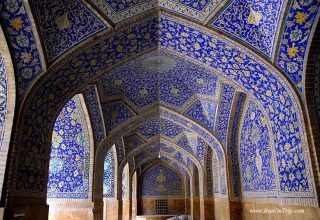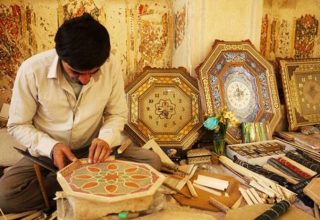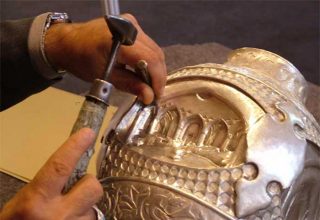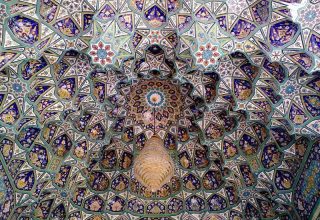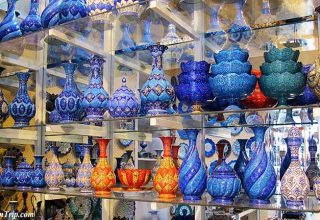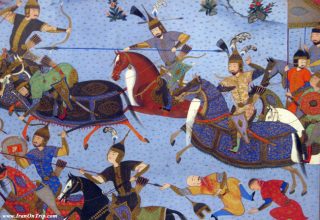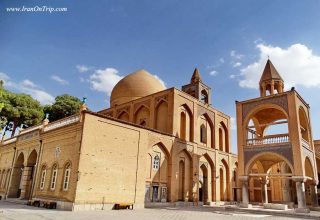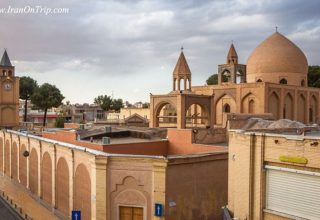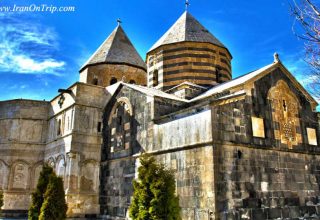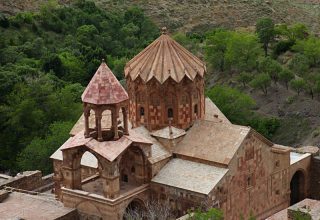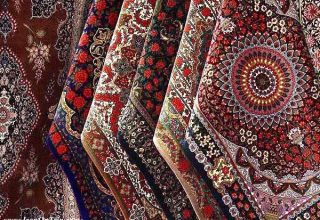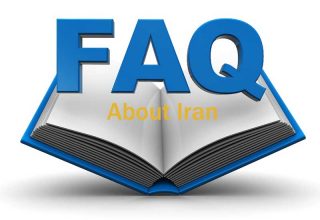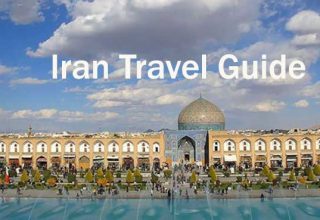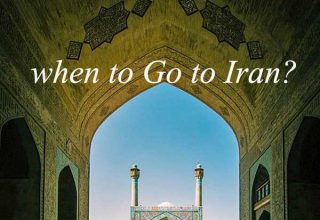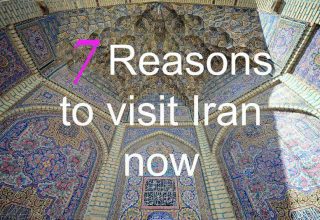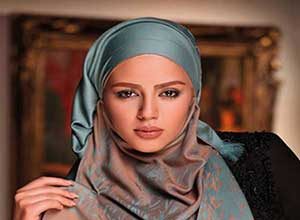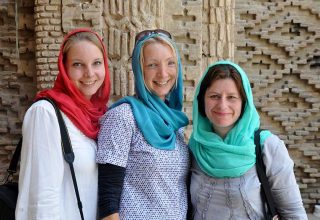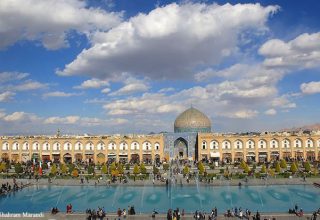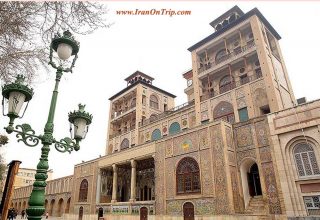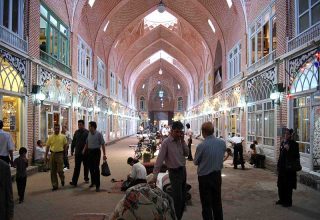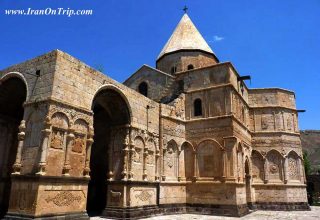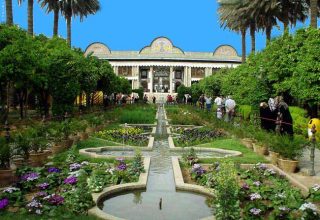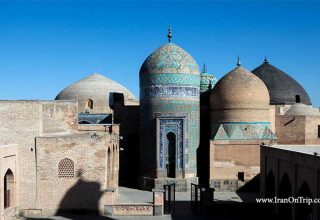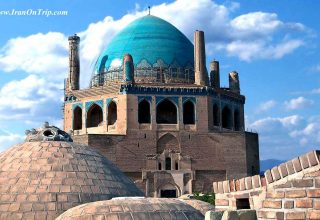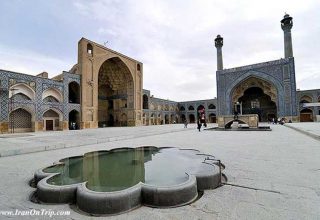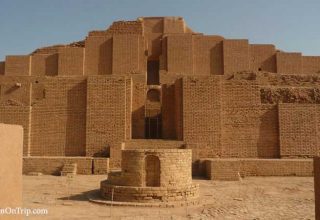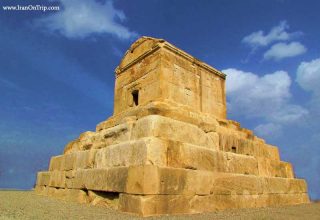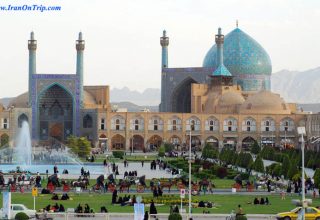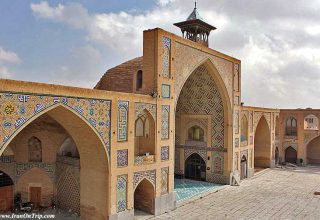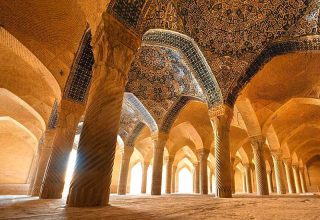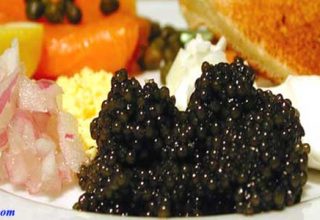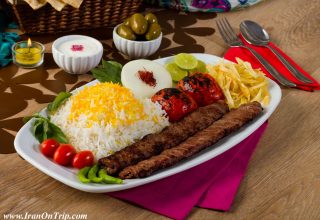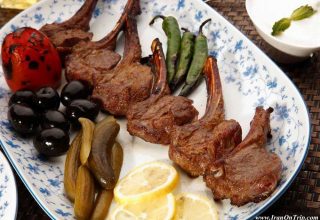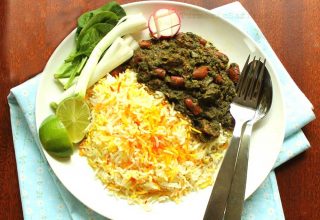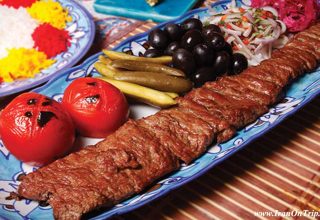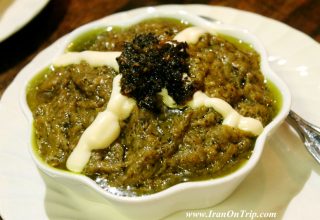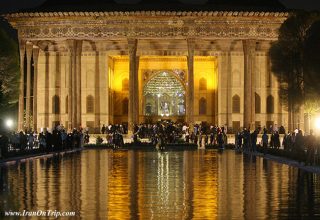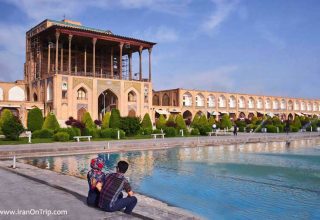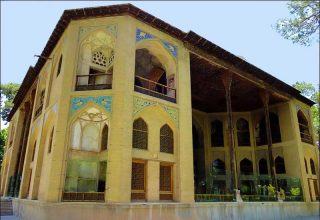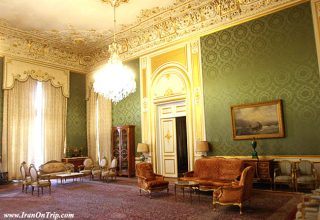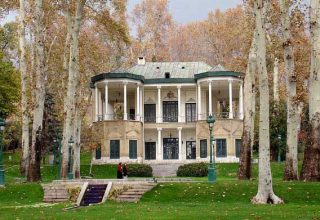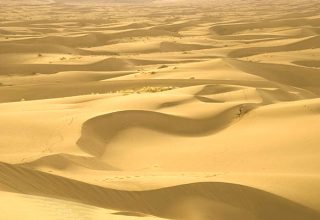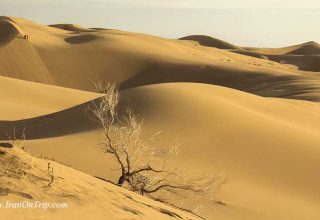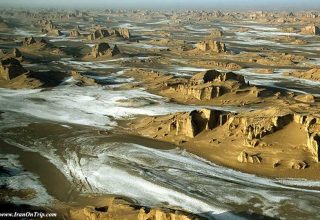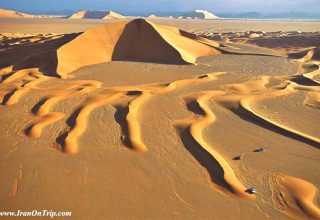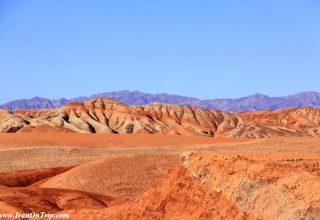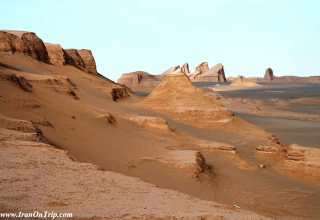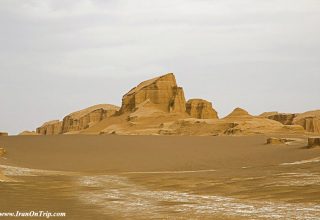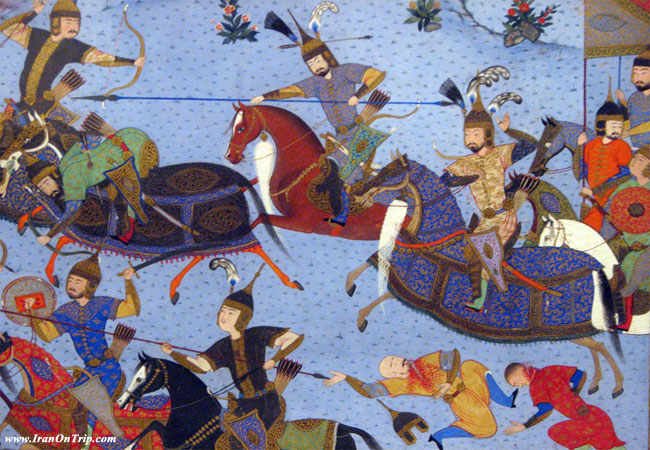

Persian Miniature
A Persian miniature is a richly detailed miniature painting which depicts religious or mythological themes from the region of the Middle East now known as Iran. The art of miniature painting in Persia flourished from the 13th through the 16th centuries, and continues to this day, with several contemporary artists producing notable Persian miniatures. These delicate, lush paintings are typically visually stunning, with a level of detail which can only be achieved with a very fine hand and an extremely small brush.

Persian miniature is a small painting, whether a book illustration or a separate work of art intended to be kept in an album of such works. The techniques are broadly comparable to the Western and Byzantine traditions of miniatures in illuminated manuscripts, which probably had an influence on the origins of the Persian tradition.Although there is an equally well-established Persian tradition of wall painting, the survival rate and state of preservation of miniatures is better, and miniatures are much the best-known form of Persian painting in the West.
Several features about Persian miniatures stand out. The first is the size and level of detail; many of these paintings are quite small, but they feature rich, complex scenes which can occupy a viewer for hours. Classically, a Persian miniature also features accents in gold and silver leaf, along with a very vivid array of colors. The perspective in a Persian miniature also tends to be very intriguing, with elements overlaid on each other in ways which sometimes feel awkward to people who are accustomed to the look and feel of Western art.Originally, Persian miniatures were commissioned as book illustrations for Persian illuminated manuscripts. Only the wealthiest of patrons could afford these illustrations, with some Persian miniatures taking up to a year to complete. Eventually, people also began collecting these works of art on their own, binding them into separate books. Many of these collections fortunately survive to this day, along with other examples of Persian art such as Iran’s famous pile carpets.
The Persian miniature was probably inspired by Chinese art, given the very Chinese themes which appear in some early examples of Persian miniatures. Many of the mythological creatures depicted in early Persian art, for example, bear a striking resemblance to animals in Chinese myth. Over time, however, Persian artists developed their own style and themes, and the concept of the Persian miniature was picked up by neighboring regions.
Many museums of Asian art have Persian miniatures in their collections, and it is well worth visiting to see examples of this distinctive art form in person. Persian miniatures also merit undivided attention; the longer one looks at a Persian miniature, the more details and themes emerge. The study of a single miniature can take up an entire day, as more and more details unfold, and many museums conveniently have detailed guides to the figures and themes in their Persian miniatures so that visitors can learn more about what they are seeing.Miniature painting became a significant Persian form in the 13th century, and the highest point in the tradition was reached in the 15th and 16th centuries. The tradition continued, under some Western influence. The Persian miniature was the dominant influence on other Islamic miniature traditions, principally the Ottoman miniature in Turkey, and the Mogul miniature in the Indian sub-continent.Though at various stages it has been affected by Chinese and Eastern influences, Persian miniature art has developed its own distinctive features. Iran’s miniature artists are recognizable for their emphasis on natural and realist motifs. Also worth noting is the Persian technique of “layering” perspectives to create a sense of space. For example, in the miniature piece at right, the variety of views is noticeable in the arrangement of objects: birds inhabit both the foreground and background of the piece, with the floral objects positioned in between. This gives the viewer a sense of three-dimensional space and the ability to focus on certain aspects of the piece to the exclusion of others.

Content and form are fundamental elements of Persian miniature painting, and miniature artists are renowned for their modest, subtle use of color. The themes of Persian miniature are mostly related to Persian mythology and poetry. Western artists discovered the Persian miniature around the beginning of the 20th century. Persian miniatures uses pure geometry and a vivid palette. The allure of Persian miniature painting lies in its absorbing complexities and in the surprising way it speaks to large questions about the nature of art and the perception of its masterpieces.
The history of the art of painting in Iran, goes back to the cave age. In the caves of Lorestan province, painted images of animals and hunting scenes have been discovered.Paintings discovered by W. Semner, on the walls of buildings, in Mallyan heights, in Fars, belong to 5,000 years ago.
In the paintings of Achaemenid era, profile work was preferred by the artists. The proportion and beauty of colors of this era are remarkable. The colors are shadeless, and have the same tune. In some cases, black stripes limited the colorful surfaces.
The paintings of “Torfan”, discovered in the desert of “Gall”, a region situated in the Turkistan province in China, belong to 840 to 860 AD. These mural paintings exhibit Iranian scenes and portraits. Images of tree branches also exist in these paintings. The most ancient paintings of the Islamic period, are quite scarce, and were created in the first half of the 13th century.China, perhaps since the 7th century, as an artistic center, has been the most important incentive for the art of painting in Iran. Ever since, a relation has been established between Buddhist Chinese painters and, Iranian artists. From the historic viewpoint, the most important evolution in Iranian art has been the adoption of Chinese designs and coloring that were mixed with the specific conception of Iranian artists. In the first centuries, after the emergence of Islam, Iranian artists began adorning books. The preface and the margins of books were adorned. These designs were passed on to the next centuries, together with precise principles and rules, which is known as the “Art of Illumination.”Paintings from the beginning of the Islamic period had the reputation of belonging to Baghdad school.
Miniatures of Baghdad school have totally lost the style and methods of the usual paintings of the pre-Islamic period.
These primitive and innovative paintings do not possess the necessary artistic stress. The miniatures of Baghdad school are not proportional. Portraits show the “Sami” race and light colors are used. Artists of the Baghdad school, after years of stagnancy, were eager to create and innovate. The particular views of this school, is in drawing animals and illustrating stories.
 |
 |
 |
Although the Baghdad school, considering the pre-Islamic art, is to some extent, superficial and primitive, but the art of Iranian miniature, in the same period, was widespread in every region in which, Islam was propagated: Far East, Africa and Europe.
Among illustrated books in the Baghdad style, “Kelileh and Demneh” can be named. Images are painted larger than normal and are not proportional. Only few colors are used in these paintings.
Most of the handwritten books of the 13th century are enriched with images of animals, vegetables, and illustrations from fables and stories.
Diverse subjects of this book, require numerous images that are so important in familiarizing the reader with the Iranian art of painting. Colors are bright and laying step after the old style of the Baghdad school.
After the invasion of Moguls, a new school appeared in Iran. This school was totally under the influence of the Chinese and Mogul style. These paintings are all minute, dry, motionless, and pure, in the Chinese style. Mogul emperors, after the invasion of Iran, were impressed by the Iranian art and encouraged the painters, initiating the former kings of Iran. Among the characteristics of the Iranian art which can also be observed in the paintings of Mogul style, we can enumerate, subtleties, decorative compositions, and fine short lines. The style of the Iranian paintings is linear and not dimensional. Artists in this field have demonstrated a particular creativity and genuineness.Artists of the Mogul royal court honored not only the techniques but also Iranian themes. A part of their work consisted of illustrating Iranian literary masterpieces such as “The Shahnameh” of Ferdowsi.
Contrary to Baghdad and Mogul schools, more works remain from Harat school. The founders of the style of painting called the Harat school, were Teimoor’s ancestors, and the school was named after the place in which it was founded.
Art experts believe that during Teimoor’s era, the art of painting in Iran, had reached a climax. During this period, outstanding masters, such as Kamal-ul-Din Behzad, contributed a new touch to the Iranian painting. Kamal ud-Din Behzad Herawi, also known as Kamal al-din Bihzad or Kamaleddin Behzad (c. 1450 – c. 1535) was a painter of Persian miniatures and head of the royal ateliers in Herat and Tabriz during the late Timurid and early Safavid periods.
Behzad is the most famous of Persian miniature painters, though he is more accurately understood as the director of a workshop (or kitabkhana) producing manuscript illuminations in a style he conceived. Persian painting of the period frequently uses an arrangement of geometric architectural elements as the structural or compositional context in which the figures are arranged. Behzad is equally skilled with the organic areas of landscape, but where he uses the traditional geometric style Behzad stretches that compositional device in a couple ways. One is that he often uses open, unpatterned empty areas around which action moves. Also he pins his compositions to a mastery at moving the eye of the observer around the picture plane in a quirky organic flow. The gestures of figures and objects are not only uniquely natural, expressive and active, they are arranged to keep moving the eye throughout the picture plane. He uses value (dark-light contrast) more emphatically, and skillfully than other medieval miniaturists. Another quality common to his work is narrative playfulness: the almost hidden eye and partial face of Bahram as he peers out the blinds to watch the frolicing girls in the pool below, the upright goat that looks like a demon along the edge of the horizon in a story about an old woman confronting the sins of Sanjar, the amazing cosmopolitan variety of humans working on the wall in the sample image. This surprising individuality of character and narrative creativity are some qualities that distinguish Bezhad’s works and that match their literary intent. Behzad also uses Sufi symbolism and symbolic colour to convey meaning. He introduced greater naturalism to Persian painting, particularly in the depiction of more individualised figures and the use of realistic gestures and expressions.
Behzad’s most famous works include “The Seduction of Yusuf” from Sa’di’s Bustan of 1488, and paintings from the British Library’s Nizami manuscript of 1494-95 – particularly scenes from Layla and Majnun and the Haft Paykar. The attribution of specific paintings to Behzad himself is often problematic (and, many academics would now argue, unimportant), but the majority of works commonly attributed to him date from 1488 to 1495.
He is also mentioned in Orhan Pamuk’s famous novel “My Name is Red” as one of the greatest Persian miniature painters. In Pamuk’s novel it is said that Kamal al-Din Behzad blinded himself with a needle.
During the Safavid era, the artistic center was moved to Tabriz. A few artists also settled in Qazvin. However, the Safavid School of painting was established in Isfahan.
The miniature of Iran, in the Isfahan of Safavid era, was detached from the influence of the Chinese out and stepped on a new road. The painters were then more inclined towards naturalism.
Agha Reza Reza-e Abbasi (also Reza Abbasi) (1565 – 1635) was the most renowned Persian miniaturist, painter and calligrapher of the Isfahan School, which flourished during the Safavid period under the patronage of Shah Abbas I.
Reza Abbassi, founded the “Safavid School of painting”. The art of design during the Safavid era was subjected to a brilliant transformation. He is considered to be one of the foremost Persian artists of all time. He received his training in the atelier of his father, Ali Asghar, and was received into the workshop of Shah Abbas I at a young age.
At the age of about 38 he received the honorific title of Abbasi from his patron, but soon left the Shah’s employ, apparently seeking greater freedom to associate with simple people. In 1610 he returned to the court and continued in the employ of the Shah until his death. His specialty was the Persian miniature, with a preference for naturalistic subjects often portrayed in an effeminate and impressionistic manner, a style which came to be popular during the late Safavid court.
Many of his works depict handsome youths, often in the role of saqi, or “wine pourer,” who at times are the focus of the admiring gaze of an older man and according to Louis Crompton, a manifestation of the Persian tradition of “appreciating youthful male beauty” (2003, p.171).

Today his works can be found in the museum that bears his name in Tehran, as well as in many of the major museums of the West, such as the Smithsonian, the Louvre and the Metropolitan Museum of Art.Miniatures created under the Safavid School, were not exclusively aimed for adorning and illustrating books. The Safavid style is softer in form than those of the Teimoorian School, specially the Mongolian. Human images and their behavior are not vain and artificial, in the contrary quiet natural, and close to reality.In Safavid paintings, the splendor and the grandeur of this period is the main attraction. The themes of the paintings are about the life in the royal court, the nobles, beautiful palaces, pleasant goodness, scenes of battles and banquets.Humans are drawn in sumptuous garments, handsome faces and elegant statues colors are glowingly bright.
Artists paid more attention to generalities and, avoided unnecessary details, as used in Harat and Tabriz styles. The smoothness of lines, the quick expression of feelings, and condensing the subjects are the characteristics of the Safavid style of painting. Since the end of the Safavid era, perspective and shading, a result of the European style, appeared in the Iranian paintings.Paintings of the Qajar era, are a combination of the classic European arts and Safavid miniature techniques. In this period, Mohammad Gaffari Kamal-ul-Molk, pushed forward the European classical style of painting in Iran. Under the qajars, a kind of painting known as the “Teahouse” painting found its place. This kind of painting is a new phenomenon in the history of the Iranian art.The great Iranian master miniaturist, Hossein Behzad the son of pen-holder designer, Mirza Lotfollah Esfahani was born in Tehran in 1894. He was greatly interested in painting in his early childhood, and his father put him under the care of Molla Ali in Madjma-os-Sanayeh, the Art Center to gain miniature painting skills. Behzad once said; an unknown and obscure feeling, pulled me toward painting, and when I took pencil or pen following this feeling, I felt like a thirsty man who reaches a limpid and refreshing spring.
It was not long before his father and his trainer died by the attack of cholera. The hard and tragic period of the life of this sensitive and talented child started since this time.Now Hossein become the apprentice of Hossein Peikar-Negar who once was Molla Ali’s apprentice. Behzad worked for him for twelve years developing his experience while making a living. He finally left Peikar-Negar in the age of 18, and opened a work shop of his own at Haji- Rahim Khan Caraavansarai near Sabzeh Maidan.
At first Behzad followed the style of old masters like Kamaleddin Behzad and Reza Abbassi. His works was so skillfully that one could not tell the difference between his works and the old masters’. He got married to Azizeh Khanam in 1921, who gave birth to their only child, Parviz. Behzad left for France in 1934, stayed in Paris for thirteen months during which he surveyed various Eastern and Western painting styles in Louvre, Guimet and Versailles museums. The result of this trip was the invention of a new style in miniature art by Behzad. He states about this travel as;
My talent budded and I become aware of my ability, my fingers attained new sensation and passion.
After his return from Paris, Behzad stopped imitating old masters works, while pursuing the miniature principles.
My study in various Iranian and foreign miniature styles aimed to create a new Iranian style conformed with the modern art. Miniature painting which had been turned to undesirable and unbecoming art, was gradually disappearing and I tried to bring a new style to save it from falling into oblivion.
On the occasion of the Avicenna millenium in 1953, an exhibition of Behzad’s works was held at the Iran Bastan Museum which drew attention of Orientalist guests from 64 countries. Turkish miniaturist and the professor of medicine. Solheil Anvar wrote in an article in Vatan newspaper published in Istanbul as;Behzad, this great artist belongs not only to Iran but also to the world. The French newspapers published many articles in praise of this Iranian artist.The Iran Bastan exhibition was a big start for Behzad to win the fame worldwide. Following it, an exhibition of his works was held in Modern Art Museum in Paris by the French government and several exhibitions in the Library of Congress of the United States was welcomed and praised by Americans.Behzad trained some trainees during his productive artistic life, one of the most famous is engineer Mohammad Naseripour, who was his accompany and now is a miniaturist pursuing Behzad’s style.
Mahmoud Farshchian (born January 24, 1930) is a world renowned master of Persian painting and miniatures. He was born in the city of Isfahan in Iran, a place famed for its art and artists, and it was here where he started to learn art, painting and sculpting.
His masterpieces have been hosted by several museums and exhibitions worldwide. He’s the most prominent modernizer of the field of miniatures, an art form which was first established in Ancient Persia and later spread to China and Turkey and other Middle eastern countries.
Mahmoud Fashchian

History Mahmoud Farshchian was born in the city of Isfahan on January 24, 1930. His father, a rug merchant, was an art aficionado who instilled a love for the arts in his son. Young Mahmoud showed an interest in arts quite early in life and studied under the tutelage of Haji Mirza-Agha Emami and Isa Bahadori for several years. After receiving his diploma from Isfahan’s high school for the fine arts, Farshchian left for Europe, where he studied the works of the great Western masters of Painting. Consequently, he developed an innovative artistic style with universal appeal.
Upon his return to Iran, he began to work at the National Institute of Fine Arts (which later became the Ministry of Art and Culture) and, in time, was appointed director of the Department of National Arts and professor at the university of Tehran’s School of Fine Arts. All the while, word of his exemplary works spread far and wide beyond national borders. He has been exhibited in 57 individual shows and 86 group shows in Iran, Europe, America and Asian countries. His works are represented in several museums and major collections worldwide. He has been awarded more than ten prizes by various art institutes and cultural centers. He has a doctorate (grade 1 in arts) in Iranian painting and Islamic arts from the High Council of Culture and Art.
The design of the Zarih (the box-like latticed enclosure which is placed on top of the tomb), roof, door and cellar in the shrine of the 8th shiite Imam, Ali ibn Mus’ar-Reza in Mashhad and his membership in the committee supervising the construction of the glorious shrine, is another artistic work of the master.
Master Farshchain currently resides in New Jersey. His son Alimorad Farshchian MD is a doctor of medicine who practices in the state of Florida. Farshchian is the founder of his own school in Iranian Painting, which adheres to classical form while making use of new techniques to broaden the scope of Iranian painting. He has brought new life to this art form and has freed it from the symbiotic relationship it has historically had with poetry and literature, to give it an independence it had not previously enjoyed. His powerful and innovative paintings are dynamic, expansive and vibrant canvases with an appealing fusion of the traditional and the modern, which are constitutes of his unique style of painting.
Master Farshchian has played a decisive role in introducing Iranian art to the international art scene. He has been invited to speak and exhibit at numerous universities and art institutes. There have been six books and countless articles published about Farshchian’s works.
Farshchian’s work “Shams and Rumi,” has been inspired by one of Rumi’s poems. Special colors have been used in the painting to feature the mystical and spiritual relationship that existed between Shams and Rumi. The painting took two months to complete in the U.S. and was unveiled at the Farshchian Art and Cultural Complex in Isfahan on August 2, 2007.
Isfahan miniature ، Persian Miniature ، History Mahmoud Farshchian ، Mahmoud Farshchian ، Shahnameh” of Ferdowsi ، Iranian Miniature ، Arts of Miniature ، Isfahan Handicrafts ، Iran Handicrafts ، Persian Handicrafts ، Arts of Iranian ، Arts of Persian , Iranian Art , Persian Art


